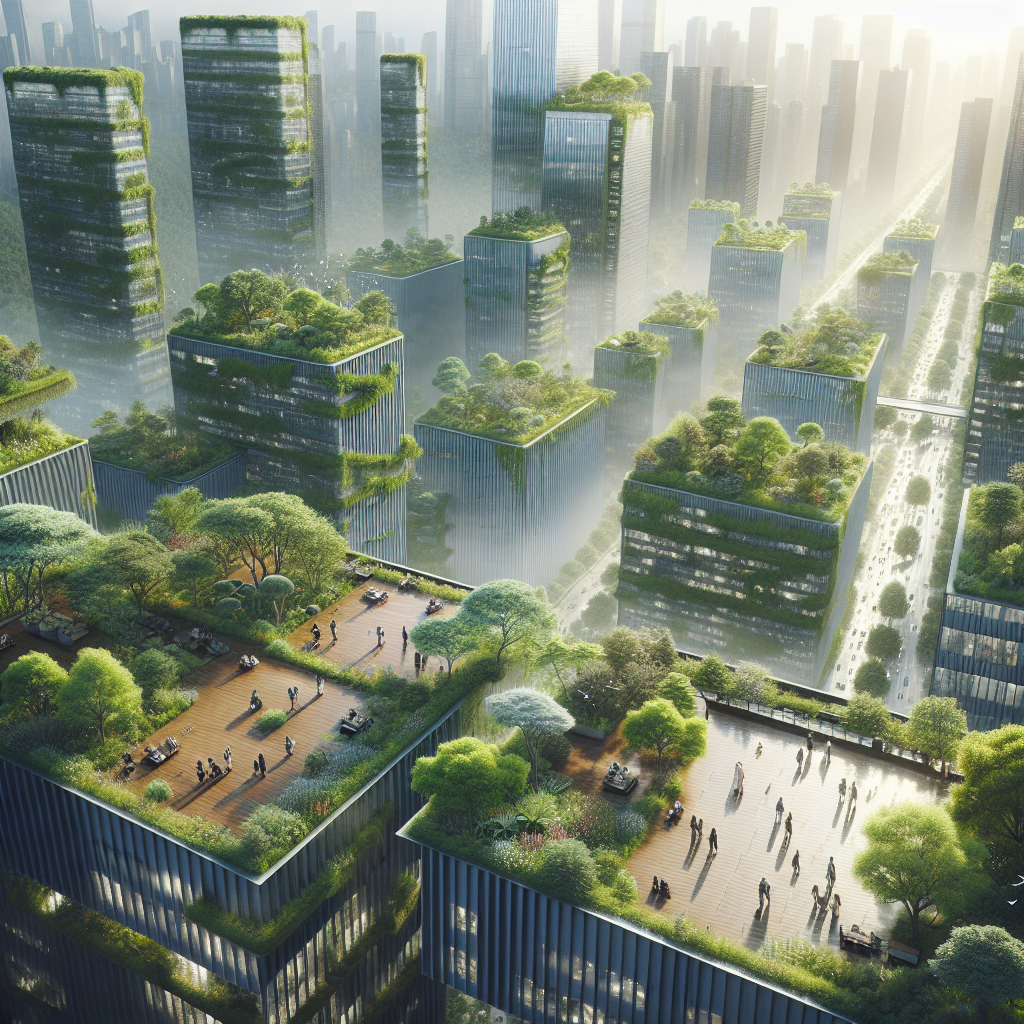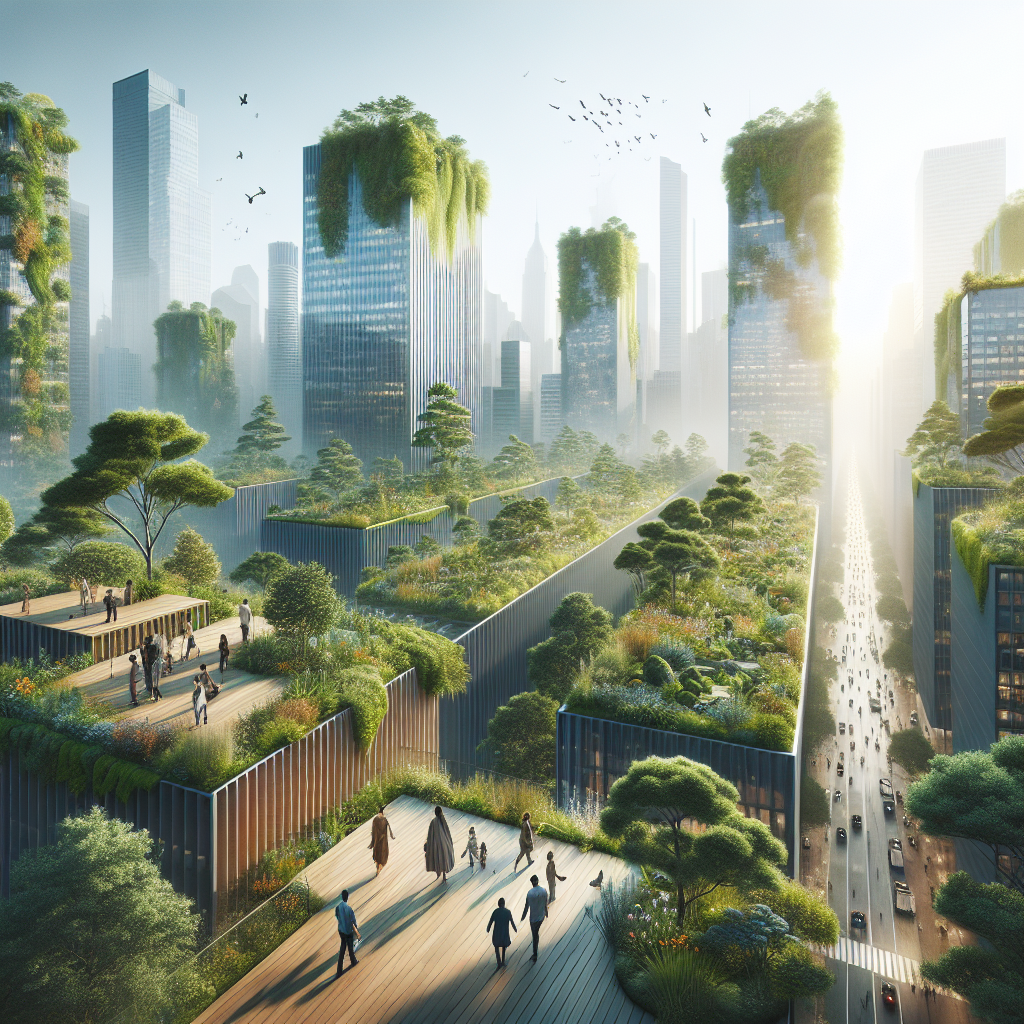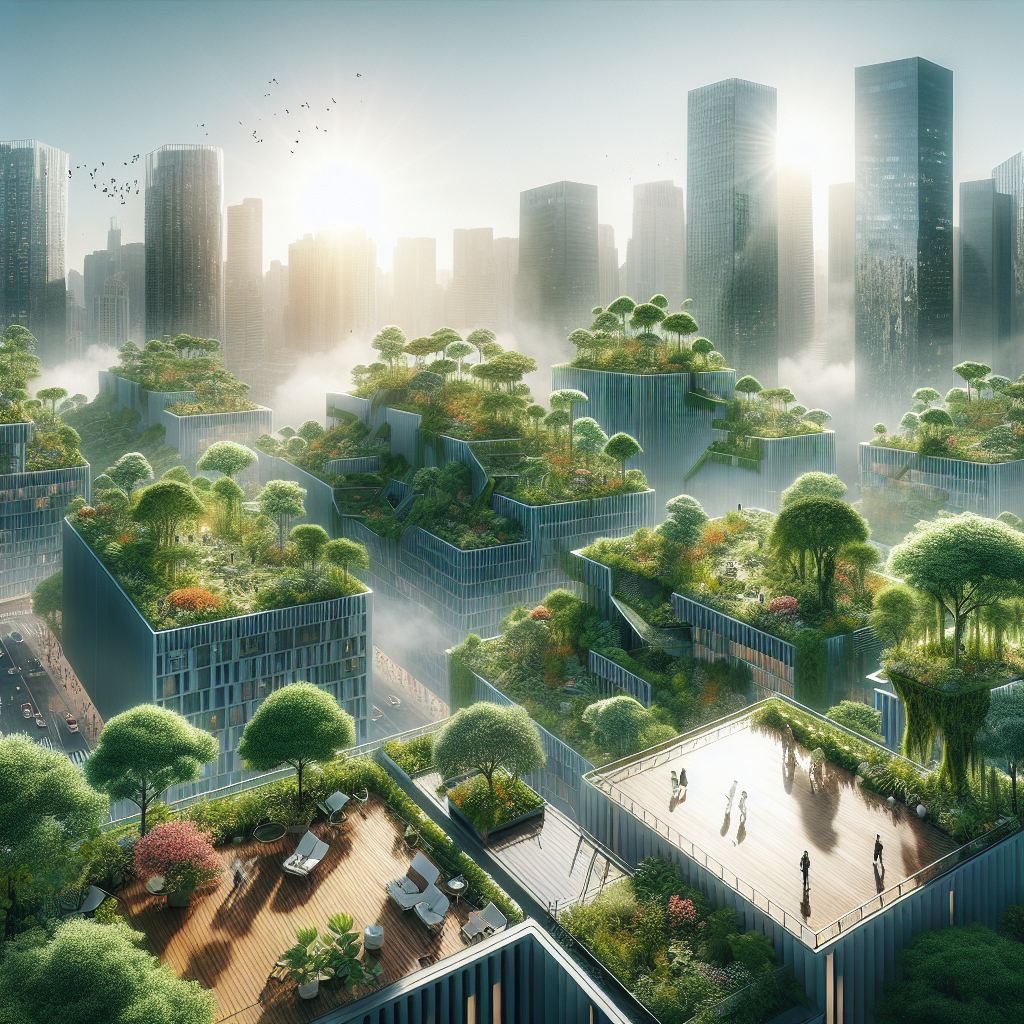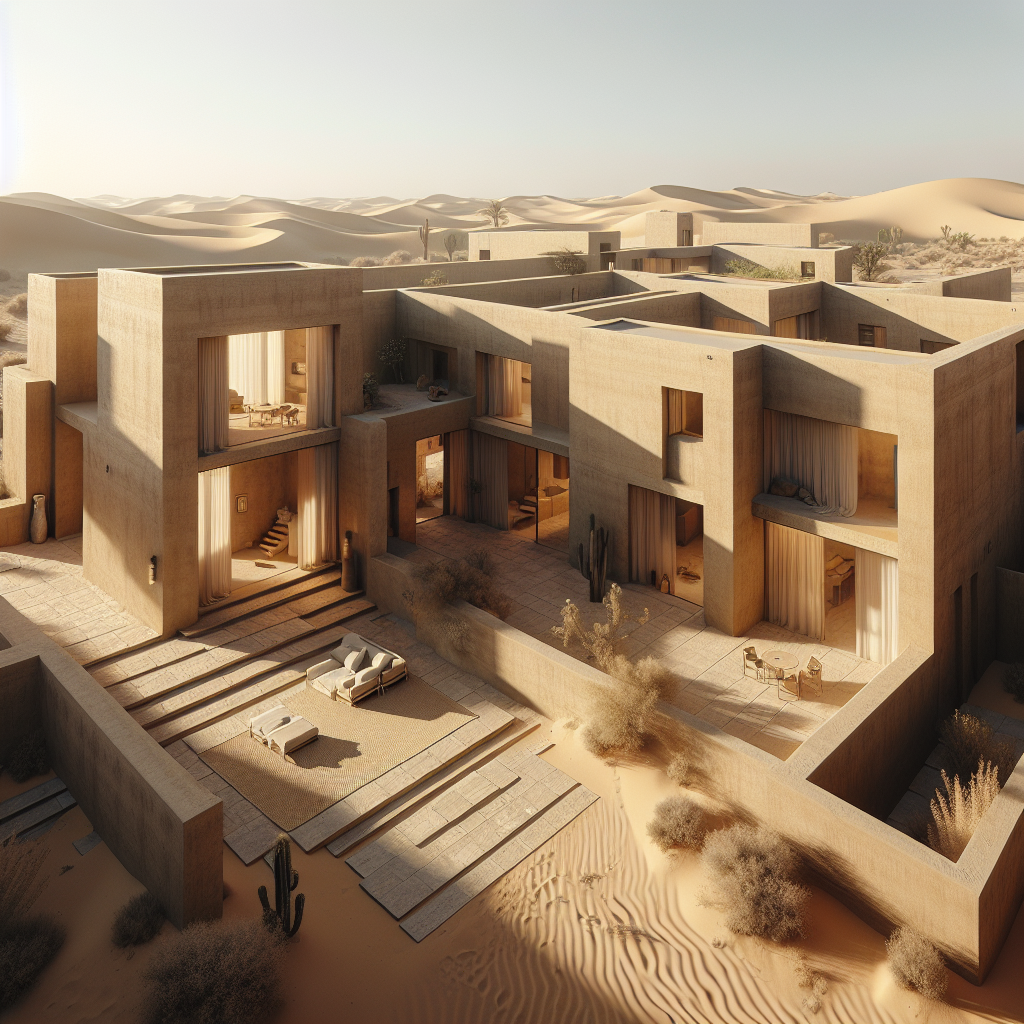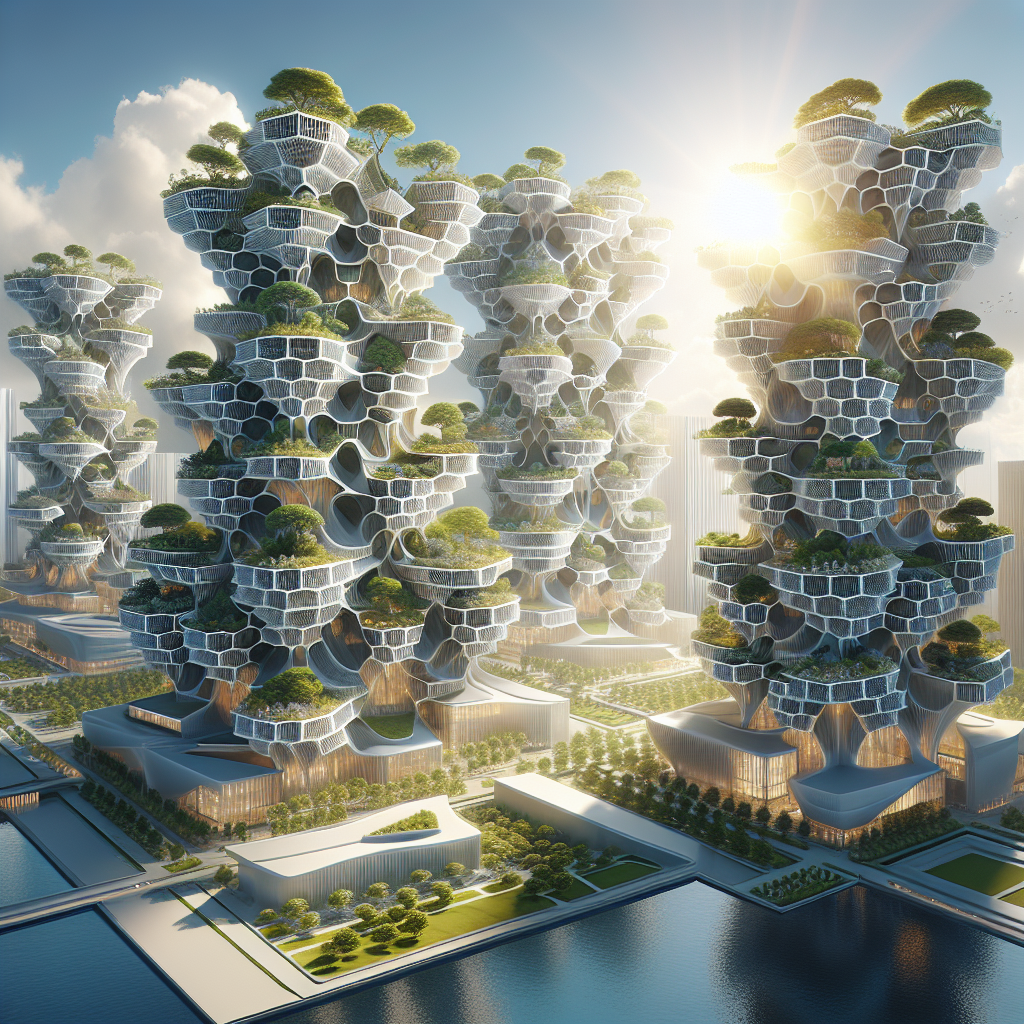Lush rooftop micro-forests: biodiversity above the city
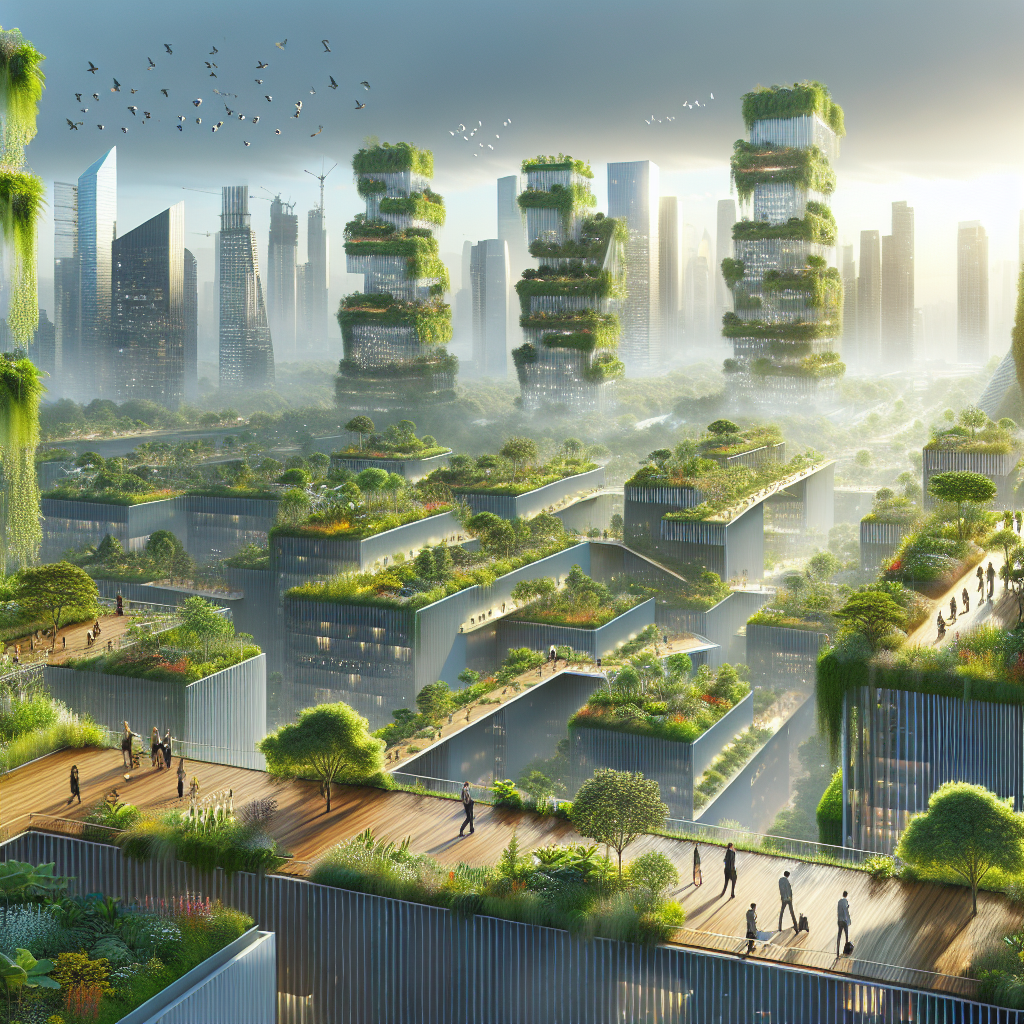
Lush Rooftop Micro-Forests: Biodiversity Above the City
In the world’s densest metropolises, a quiet revolution is taking root above the skyline. Once the domain of mechanical units and concrete slabs, rooftops are being reimagined as living ecosystems—micro-forests that fuse architecture, ecology, and urban resilience. These elevated biomes are more than aesthetic gestures; they represent a profound shift in how cities confront climate change, promote biodiversity, and redefine the human relationship with nature in built environments.
The Rise of the Urban Canopy
As global urbanization accelerates—projected to reach nearly 70% of the world’s population by 2050 according to the United Nations—cities face mounting pressure to reconcile density with livability. Rooftop micro-forests have emerged as a compelling solution. Unlike traditional green roofs, which typically feature sedum mats or ornamental grasses, micro-forests replicate the layered complexity of natural woodland ecosystems on a miniature scale. They incorporate canopy trees, shrubs, and groundcover species that create self-sustaining habitats for birds, pollinators, and insects.
The concept draws inspiration from the Miyawaki method, a reforestation technique developed by Japanese botanist Akira Miyawaki. By planting dense clusters of native species, these forests mature up to ten times faster than conventional tree plantations, forming resilient ecosystems in just a few years. When transposed to rooftops, the approach becomes both a technical and poetic act—transforming sterile surfaces into thriving microcosms of biodiversity.
Designing for Density and Diversity
Creating a rooftop micro-forest is an intricate architectural and ecological challenge. Structural engineers must account for the substantial load of soil, root systems, and irrigation infrastructure, while landscape architects orchestrate the spatial choreography of species to ensure balance and resilience. The result is a delicate equilibrium between structural pragmatism and ecological spontaneity.
In Paris, the Forêt Urbaine atop the Tour Montparnasse renovation exemplifies this synthesis. Designed by Nouvelle AOM, the project integrates a multi-layered forest of native oaks, birches, and undergrowth plants that cool the building envelope and absorb urban noise. Similarly, in Singapore—a city long synonymous with vertical greenery—the Oasia Hotel Downtown by WOHA Architects envelops its façade and rooftop in lush vegetation, creating a vertical ecosystem that supports over 30 bird species. These projects echo the principles of biophilic design, emphasizing the innate human need to connect with living systems.
Ecological Performance and Urban Impact
Beyond their visual allure, rooftop micro-forests deliver measurable environmental benefits. According to a 2023 study by the European Environment Agency, vegetated rooftops can reduce building energy consumption by up to 25% through natural insulation and evapotranspiration. The layered vegetation captures particulate matter, mitigates the urban heat island effect, and enhances stormwater retention—critical in cities increasingly prone to flash floods.
Micro-forests also serve as stepping stones for urban wildlife. In dense districts where ground-level green space is scarce, these elevated habitats form ecological corridors that allow species to migrate and adapt. A rooftop forest in Milan’s Porta Nuova district, for instance, has become a nesting site for black redstarts and pollinator bees, demonstrating how architecture can act as a bridge between fragmented ecosystems.
Engineering the Living Roof
Implementing a rooftop micro-forest requires a multidisciplinary approach. Structural engineers, botanists, and hydrologists collaborate to ensure that the living layer integrates seamlessly with the building’s envelope. Lightweight engineered soils, often composed of volcanic aggregates and organic compost, reduce load while maintaining root aeration. Subsurface irrigation systems—powered by rainwater harvesting—ensure sustainability even during dry seasons.
Some architects are pushing this integration further through responsive design technologies. Sensors embedded in soil layers monitor moisture and nutrient levels, adjusting irrigation in real time. This convergence of ecology and smart systems mirrors innovations seen in AI-driven architecture, where data enhances environmental performance without compromising aesthetic intent.
Case Study: Tokyo’s Sky Forests
Tokyo, a city renowned for its spatial ingenuity, has become a pioneer in rooftop rewilding. The Shibuya Scramble Square, completed in 2019, features a 2,500-square-meter rooftop forest designed by Takenaka Corporation. The design integrates over 100 native plant species, from Japanese maples to camellias, arranged to mimic the stratification of a natural forest. The result is a microclimate that cools the rooftop by up to 4°C during summer months while offering a contemplative refuge above the city’s frenetic pace.
Architectural critic Hiroshi Naito describes these spaces as “urban lungs suspended in the sky”—a poetic yet accurate metaphor for their environmental role. The success of such projects has inspired similar initiatives in Seoul, London, and Toronto, where municipal incentives now encourage developers to dedicate a percentage of roof area to biodiversity projects.
Social and Psychological Dimensions
While their ecological value is evident, rooftop micro-forests also address a subtler human need: psychological restoration. Studies in environmental psychology have shown that exposure to natural environments—especially those rich in biodiversity—reduces stress, enhances cognitive function, and fosters social cohesion. For residents of high-density housing, a rooftop forest offers a rare sensory reprieve: the rustle of leaves, the scent of soil after rain, the sight of butterflies tracing erratic paths through sunlight.
These experiences align with the growing emphasis on urban farming and community-driven green spaces, which blur the boundaries between architecture, landscape, and collective well-being. As cities grapple with mental health challenges exacerbated by isolation and digital saturation, such spaces become vital components of urban resilience.
Economic and Policy Implications
From a policy perspective, rooftop micro-forests represent a strategic investment in long-term sustainability. Municipalities like Paris and Singapore have introduced tax incentives and zoning bonuses for buildings that incorporate green infrastructure. Developers, in turn, recognize the market value of biophilic amenities—properties with accessible green roofs command premiums of up to 15% in major urban centers, according to Knight Frank’s 2024 Global Cities Report.
Moreover, these projects align with broader climate adaptation frameworks, complementing initiatives such as net-zero architecture and circular design. By integrating biodiversity into the built fabric, cities can reduce carbon footprints while enhancing quality of life—a dual imperative that defines the next frontier of sustainable urbanism.
Material Innovation and Aesthetic Expression
Designers are increasingly exploring how materiality can amplify the ecological narrative of rooftop forests. Permeable paving made from recycled aggregates, corten steel planters that weather gracefully, and timber decking sourced from certified forests all contribute to a tactile, organic aesthetic. These materials not only support environmental goals but also evoke a sense of authenticity and permanence—qualities often missing in hyper-urban contexts.
In this sense, rooftop micro-forests embody a new design language: one that merges the precision of architecture with the unpredictability of nature. They invite a rethinking of beauty itself—not as static perfection, but as a living, evolving dialogue between human craft and ecological process.
The Future of Urban Rewilding
As cities confront the intertwined crises of climate change and biodiversity loss, rooftop micro-forests offer a tangible, scalable model for regeneration. They demonstrate that even within the densest urban fabrics, there is room for wilderness—curated yet untamed, structured yet alive. The success of these projects signals a broader cultural shift: from domination of nature to collaboration with it.
In the coming decade, architects and planners will likely expand this concept beyond rooftops to include vertical façades, elevated walkways, and suspended gardens that connect buildings into continuous ecological networks. This evolution resonates with the ethos of biomimicry in design, where natural systems inspire sustainable innovation.
Ultimately, rooftop micro-forests remind us that the future of architecture is not merely about constructing higher or smarter—it is about cultivating life. Above the noise and density of the city,
